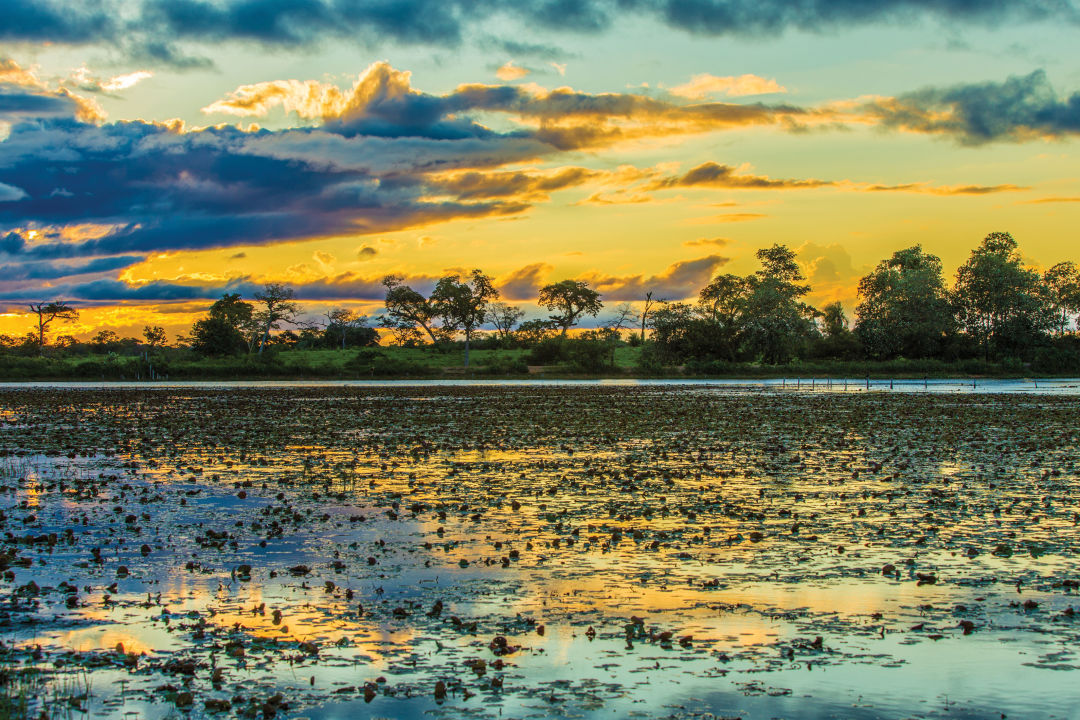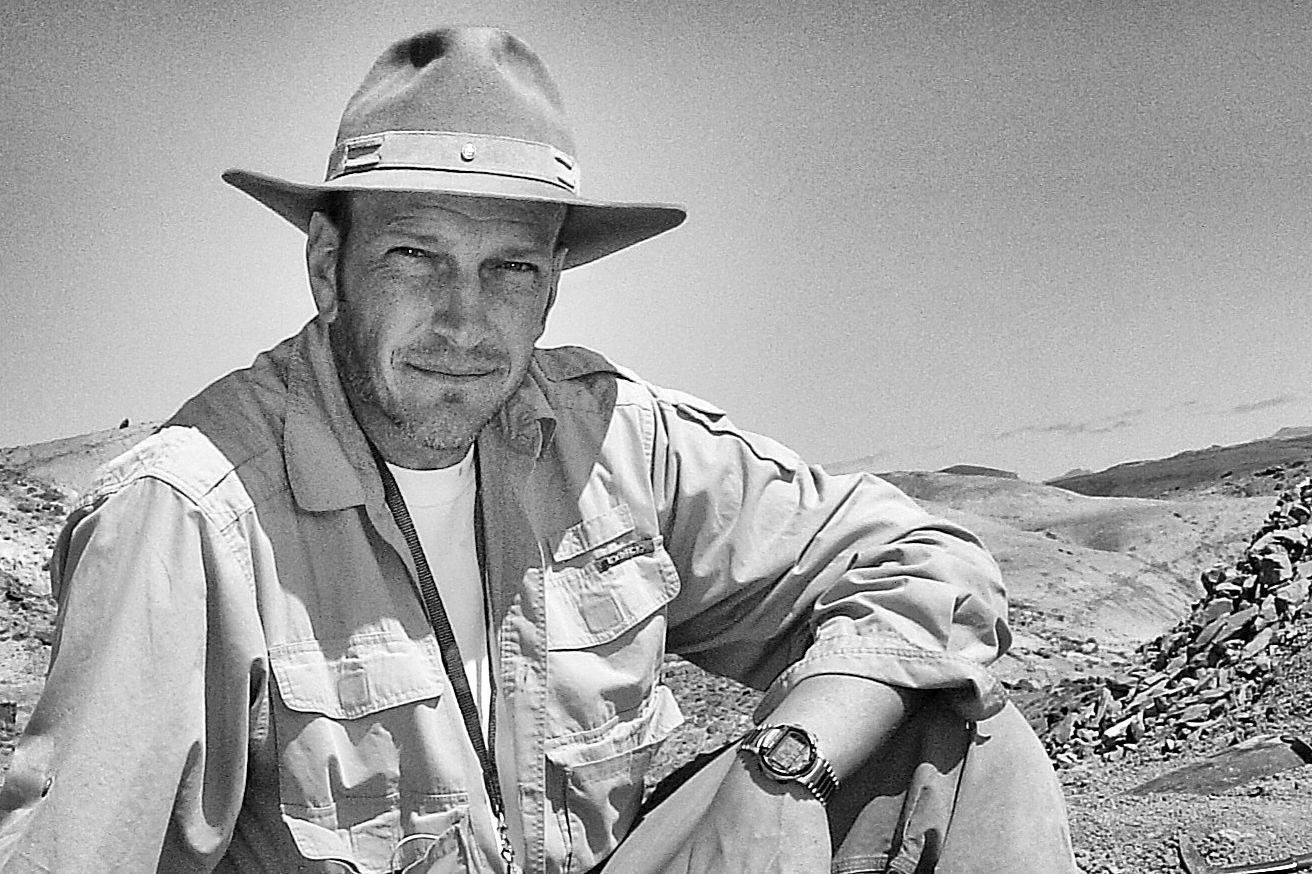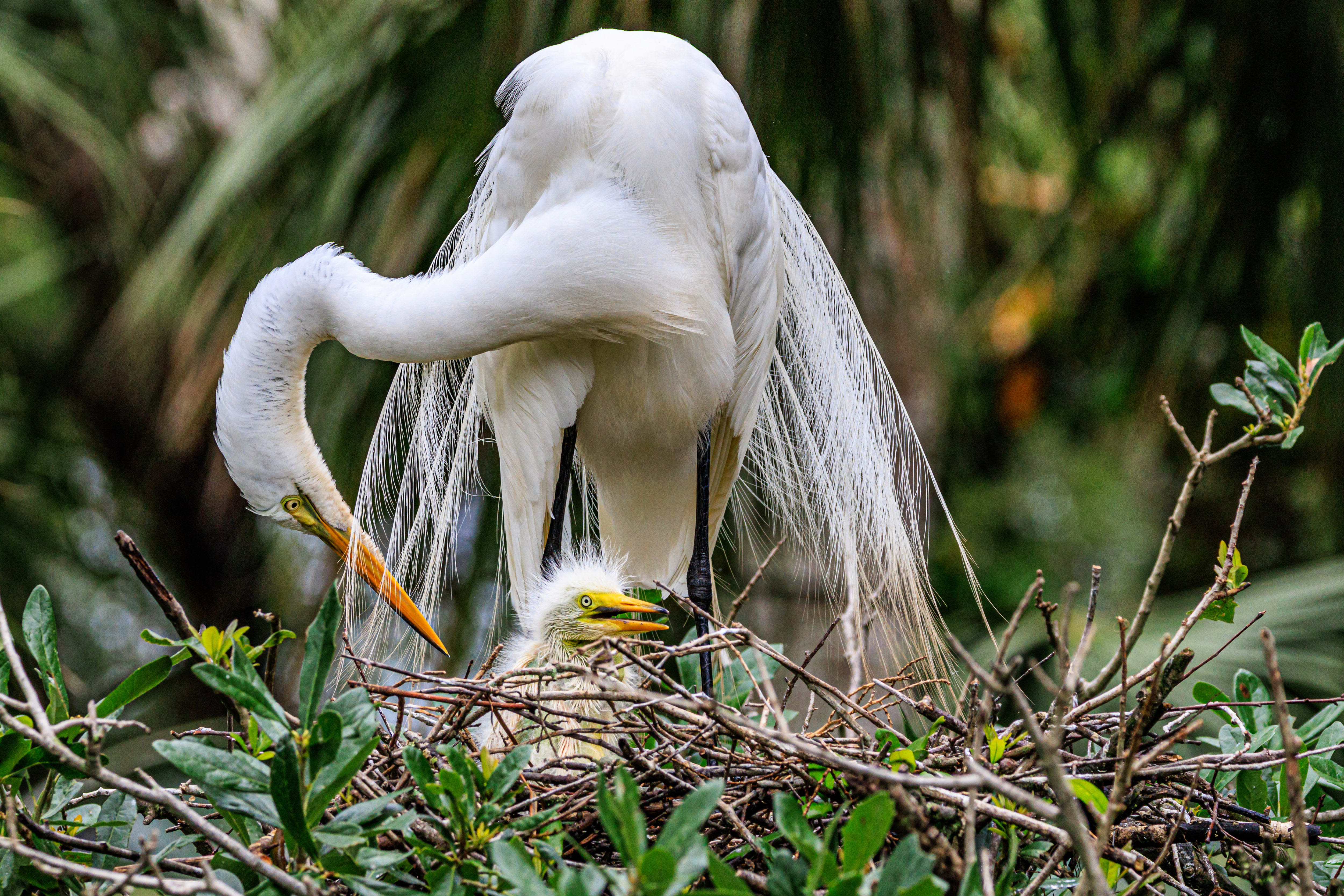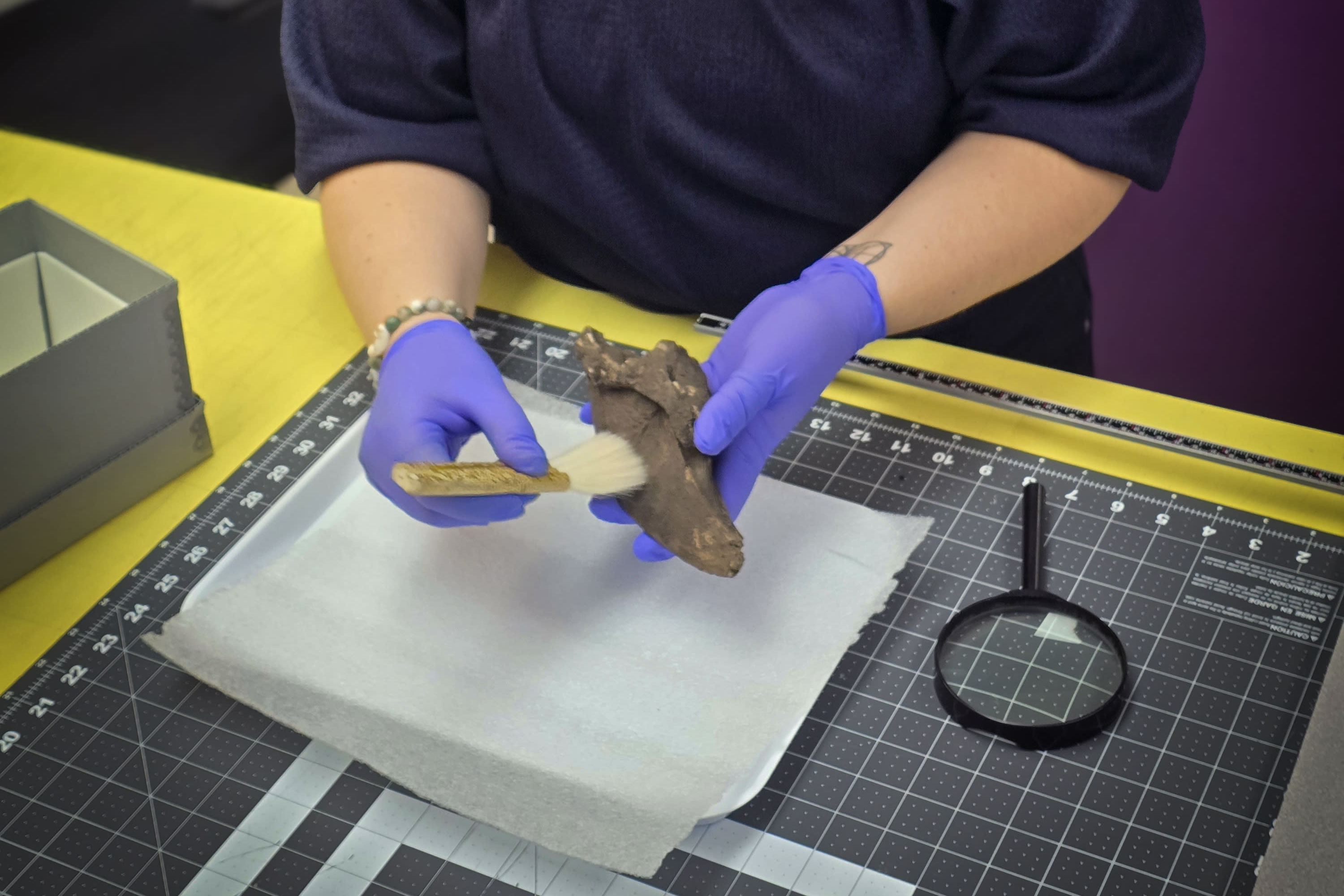Experience Primal Nature in the Everglades

Sunset over the Everglades.
Above us, a squadron of white pelicans glides through the bright-blue sky, and in the distance, tangles of green mangroves surround a few of the Ten Thousand Islands scattered off Florida’s southwest coast. We are basking in the tranquil beauty—until our captain spots dolphins close to the boat.
“They’re herding mullet!” he shouts. We rush to the side and see a dark patch in the water—a seething mass of fish, surrounded by at least a dozen dolphins. The dolphins are so close we can hear their squeaky calls to each other and look into their eyes when they surface. Suddenly two big dolphins race through the circle of fish, slapping their tails and sending the fish flying into the air. The pod converges on the prey, cutting back and forth through the circle in a feeding frenzy. An osprey hovers a few feet above, skittish about diving into the melee. And then a four-foot-long shark, sleek and silver, cuts through the crowd, snapping up mullet as it swims. For 20 minutes, we watch, mesmerized, and all the way back to the Gulf Coast ranger station at Everglades National Park, we keep talking about what we’ve seen.
Primal nature is always close at hand in the Everglades. Look out your car window on Alligator Alley and you’ll see red-eyed anhingas holding their wings out to dry, stately blue herons stalking fish in the canals and the occasional “Panther Crossing” sign to remind you of the elusive cats prowling through the forest.
But to really experience the beauty—and a lifestyle that’s all but vanished elsewhere in the state—turn off Alligator Alley at State Road 29 and head south towards Everglades City.
Developer Barron Collier founded the town in the 1920s, laying out a broad boulevard lined with royal palms, envisioning it as the grand capital of the Southwest Florida empire he intended to carve out of the wilderness. Instead, today it’s a tiny time-warp of a place that’s home to 400 people but attracts fishermen, hunters and snowbirds who like the rustic, Old Florida flavor. The historic Rod & Gun Club in its heyday attracted wealthy sportsmen and celebrities. Its cypress-paneled dining room and bar and the big porch overlooking the Barron River still make a wonderful setting to enjoy a drink or a meal, and one of the inn’s cottages is a cozy place to spend the night.
A few minutes south of Everglades City is the Gulf Coast entrance to the park, where you can take a guided boat tour, as we did, set up a camp, or launch a paddling adventure. Or head east to another part of the park—Shark Valley, deep in the Everglades. (Be sure to stop at the Big Cypress Gallery, which showcases the stunning, large-scale nature photography of Venice’s Clyde Butcher.)
A narrow roadway blasted out of limestone circles 15 miles through Shark Valley’s endless vista of sawgrass marsh—the famous “River of Grass”—dotted with the occasional island of trees. You can take a guided tram tour—a great way to learn about the wildlife and natural history—or walk or bike the trail. Either way, you’ll see beautiful birds—we spot roseate spoonbills, egrets, herons, kingfishers, a limpkin and more—and alligators. Lots of alligators. Like enormous, armored logs, they lie next to the trail and sometimes even in the middle of it. (Amazingly, our tram guide tells us, there have been no fatalities here, even though some visitors ignore posted warnings and approach the alligators; a few have even placed children on their backs to take a picture.) But what you won’t see, these days, are the deer, bobcats and marsh rabbits that once thrived here.
The reason—out of sight but everywhere around you—are the Burmese pythons that have ravaged this ecosystem. First released by pet owners into the eastern swamps off Miami in the 1970s, the pythons, which can grow to enormous size, have proliferated. Some believe as many as 100,000 now slither through the Everglades, which offers them perfect camouflage and total domination. A recent count found that more than 90 percent of mammals in the Everglades have disappeared; now naturalists fear the pythons are even putting the alligators at risk, by devouring all their prey.
Natural beauty and drama abound in the Everglades, and so do sobering lessons about the fragile balance of nature. We’re not taking this majestic, mysterious landscape and its myriad creatures for granted any longer; we’re planning to return soon.
MORE NATURE TRIPS
Hop over the border into Georgia to explore the 630-square-mile Okefenokee National Wildlife Refuge, preserved in 1937 after decades of drainage and timbering left it reeling. The refuge sprawls across a huge flooded prairie, with almost 70 islands and several lakes. More than 620 plant species grow in the swamp and hundreds of animal species call it home. On a typical visit you might spy otters, foxes, feral pigs and alligators, and maybe even a black bear. Would that make you lucky or unlucky?
Most people don’t think of caverns when they think of the Florida landscape, but we’ve got them. Florida Caverns State Park—located in Marianna, just an hour or so northwest of Tallahassee—is the state’s only park offering public cave tours, which will introduce you to an underworld array of limestone stalactites, stalagmites, soda straws and more. The formations glow with a rainbow of surreal colors; shapes cast ominous shadows. Want to feel like you’re leaving Florida without actually leaving Florida? Go here.
When a bridge first connected Sanibel Island to the mainland in 1963, residents developed a strict comprehensive plan to make sure that new development stayed away from the island’s stunning beaches, dunes and wetlands. The J.N. “Ding” Darling National Wildlife Refuge protects 6,400 acres of mangrove forests and is particularly well-loved by bird enthusiasts. The space includes important habitat for more than 245 different avian species.



